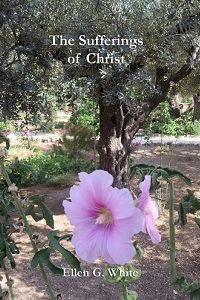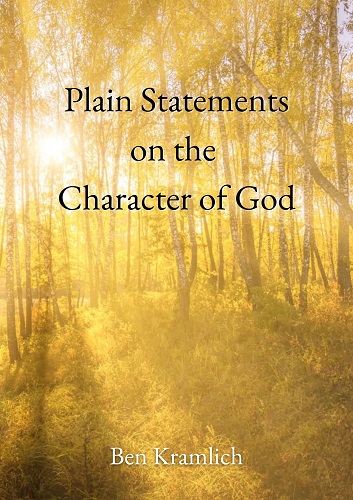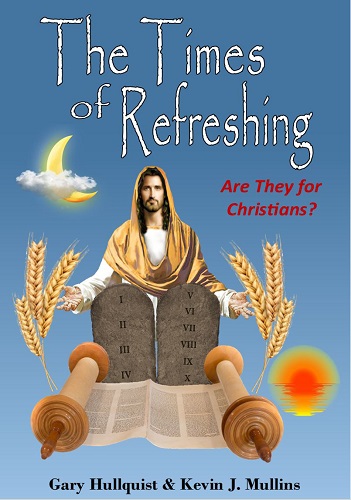Protestantism the ‘Tannenbaum Religion’?
Brother Thiel, who goes by the moniker COGwriter, maintains a website at www.cogwriter.com that reports on news, prophecy, and doctrinal matters of interest to those who believe the Bible. “COGwriter is an abbreviation for Church of God (COG) writer. The term Church of God is used here to include those Sabbatarian (sabbath-keeping) churches that are faithful to apostolic Christianity (most generally, but not exclusively, those who came out of the pre-1986 Worldwide Church of God, and hold similar beliefs).”
Though I do not endorse all the content on his website, I found the following article interesting, especially the connection between Christmas and the trinity. (Frank Klin)
Protestantism the ‘Tannenbaum religion’?

The Wall Street Journal ran an article that contained the following:
Christmas trees arrived in England and America only in the mid-19th century…
The Tannenbaum (which simply means “fir tree”) came to be associated, apocryphally or not, with Martin Luther. Because of that, many Catholics in Germany once disdained it. The “aversion of many Catholics went so far,” Mr. Brunner writes, “that at the end of the nineteenth century many simply called Protestantism the ‘Tannenbaum religion.’ ” As late as the 1930s, the Vatican was recommending manger scenes instead of Christmas trees as a more theologically sound sort of decoration. But the church today no longer sees a conflict—Christmas Eve at the Vatican’s St. Peter’s Square now features both a life-size Nativity and a towering Christmas tree.
It wasn’t until the middle of the 19th century that the tradition began to spread outside Germany. Christmas trees were a novelty in England by 1850, thanks to a royal example set by the German-born Prince Albert…In the mid-19th century, the Christmas tree made inroads in America, too….
It has often been suggested that the Christmas tree is a pagan custom co-opted long ago by pragmatic Christian evangelists…Yes, candlelight featured in pre-Christian solstice festivals. And no doubt one can find some misty antecedents involving tree worship.
There are a lot of non-Christian symbols associated with the celebration of what is now called Christmas. Tannenbaum literally means “fir tree” and is the German term for Christmas tree.
Most who have looked into the subject of Christmas trees are familiar with the passages in Jeremiah 10 that clearly seem to condemn pagan tree practices:
2″Do not learn the ways of the nations
or be terrified by signs in the sky,
though the nations are terrified by them.
3 For the customs of the peoples are worthless;
they cut a tree out of the forest,
and a craftsman shapes it with his chisel.
4 They adorn it with silver and gold;
they fasten it with hammer and nails
so it will not totter.
5 Like a scarecrow in a melon patch,
their idols cannot speak;
they must be carried
because they cannot walk.
Do not fear them;
they can do no harm
nor can they do any good.” (Jeremiah 10:2-5, NIV).
While the trees themselves cannot harm us, God says that they cannot do any good.
Even though there is nothing in the Bible to encourage putting a tree in one’s house to honor Jesus or the Father, both Catholics and Protestants believe that they have a legitimate reason.
Even though they condemned the fir trees when once calling Protestantism the “Tannebaum religion,” Catholics claim a prior use. In the 7-8th century, their St. Boniface chopped down an oak dedicated to Thor and a fir tree grew at the same place. After that happened Boniface was said to have stated, “Its leaves remain evergreen in the darkest days: let Christ be your constant light” (Christmas Tree. Wikipedia, 12/22/07). But the truth is that the evergreen tree had long been a pagan religious symbol in northern Europe.
According to the Historic Trinity Lutheran Church of Detroit:
Dr. Martin Luther is credited with originating the use of lighted pine trees in the home for Christmas.
Here is one account of how Catholics and Protestants got the tree:
hy do we have a decorated Christmas Tree? In the 7th century a monk from Crediton, Devonshire, went to Germany to teach the Word of God. He did many good works there, and spent much time in Thuringia, an area which was to become the cradle of the Christmas Decoration Industry.
Legend has it that he used the triangular shape of the Fir Tree to describe the Holy Trinity of God the Father, Son and Holy Spirit. The converted people began to revere the Fir tree as God’s Tree, as they had previously revered the Oak. By the 12th century it was being hung, upside-down, from ceilings at Christmastime in Central Europe, as a symbol of Christianity.
The first decorated tree was at Riga in Latvia, in 1510. In the early 16th century, Martin Luther is said to have decorated a small Christmas Tree with candles, to show his children how the stars twinkled through the dark night (The Chronological History of the Christmas Tree Copyright © 1998-2007 Maria Hubert von Staufer, viewed 12/22/07).
Of course, that once again is one of the problems of Christmas, it substitutes pagan symbols for that of the true God.
And if you are asking yourself, doesn’t the trinity represent God, you may wish to study more into the Bible and the History of Christianity and also read the article Did the True Church Ever Teach a Trinity? Another aspect of history is that the early Church condemned winter celebrations like modern Christmas–Christmas was not observed by the early true church. This is documented in the article What Does the Catholic Church Teach About Christmas and the Holy Days?
Now, getting back to the accusation of Catholics about Protestants being the “Tannenbaum religion,” basically the Protestants condemned the Church of Rome for many practices, including idolatry. The Catholics considered that having a decorated fir tree in one’s house, which of course is not a symbol associated with the birth of Jesus in the Bible, during the Christmas season was a form of idolatry.
However, over time, as the use of trees gained more universal acceptance, those of the Catholic faith decided to no longer decry their use, but instead found a legend in their own history to suggest that they had the idea originally.
All of this may seem to be bizarre, but a lot of the doctrinal history of the Catholics and Protestants is.





